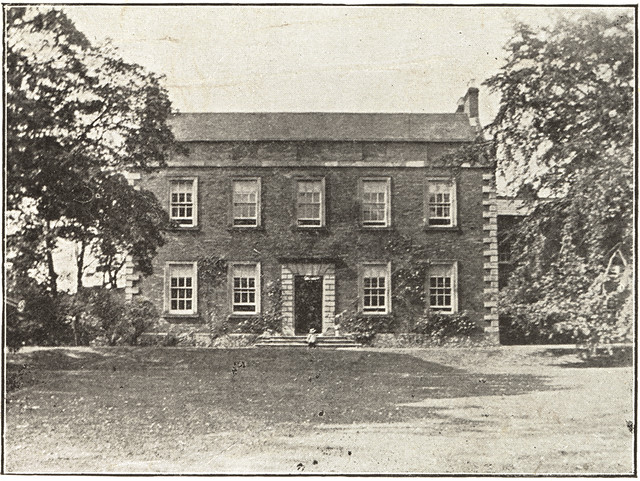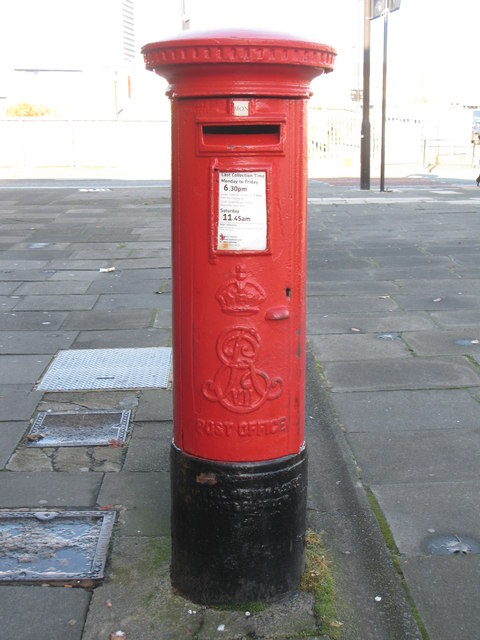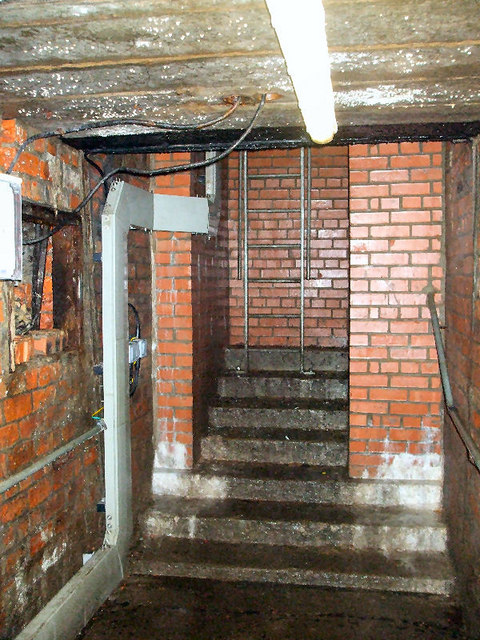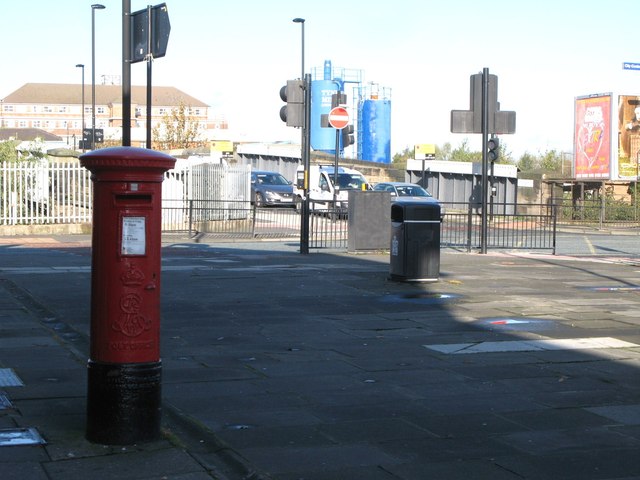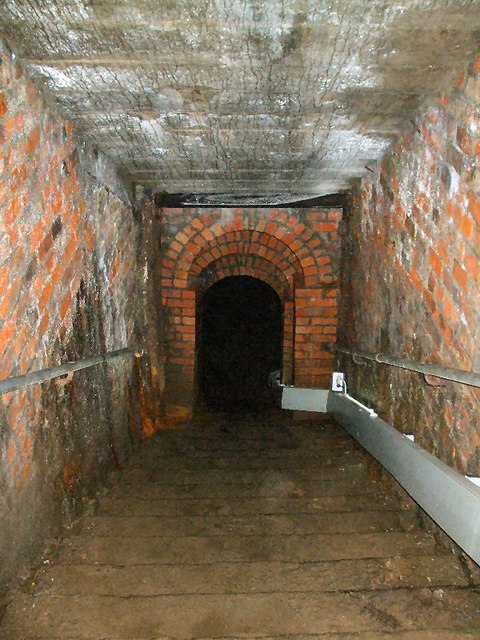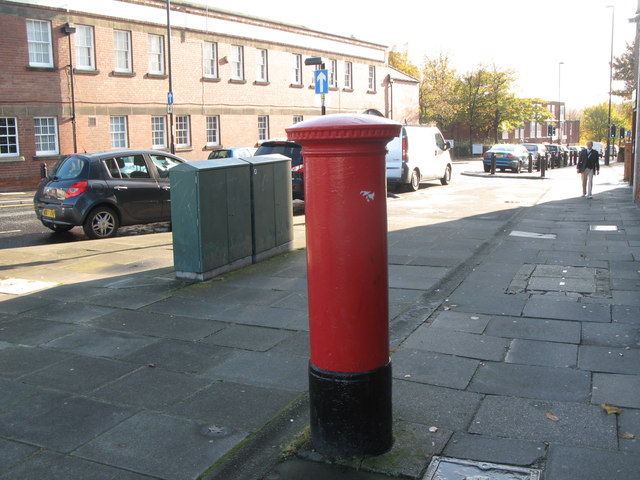Topics > Tyne and Wear > South Tyneside > Jarrow > Jarrow (St. Paul) Parish, 1848
Jarrow (St. Paul) Parish, 1848
JARROW (St. Paul), a parish, partly in the union of Gateshead, and partly in that of South Shields, E. division of Chester ward, N. division of the county of Durham; comprising the townships of Harton, Hedworth, Heworth, Jarrow, Monkton, South Shields, and Westoe; and containing 33,945 inhabitants, of whom 9,082 are in the town and port of South Shields. Jarrow is of great antiquity, and appears, from various relics discovered at different times, to have been occupied by the Romans, either as a secondary station or a fortified village. Foundations of buildings, clearly of Roman origin, have been dug up in the fields north of the church; and in altering the direction of the road, two square pavements of Roman brick, a small coin of Aulus Vitellius, and a stone sculptured with a representation of an archer shooting at a stag, were found at the east end of Jarrow-row. Among other evidences of Roman occupation, discovered during the removal of old buildings, in 1782, are, a military trophy resembling those generally placed by that people in front of their public edifices, with an inscription implying that it was erected by the army on the extension of the Roman dominion in Britain from the western to the eastern sea; and the mutilated fragment of a votive altar to all the sons of Adrian. After the departure of the Romans from Britain, the Saxons, according to their usual policy, availing themselves of the stations which the former had occupied, a monastery was founded here by St. Benedict, to whom Egfrid, King of Northumbria, had granted 40 hides of land for that purpose. The church was completed in 685, and dedicated to St. Paul, as shown by an inscription originally inserted in the northern wall, but now placed over an arch of the tower, between the nave and chancel of the present edifice: "On the 9th of the Kalends of May, or the 23rd of April, in the 15th year of King Egfrid, and the 4th of Ceolfrid, abbot, and, under God, founder of the church." The monastery was frequently plundered and burnt by the Danes, but was restored, and according to an inscription built up in the church is supposed to have been refounded by the Normans. The establishment, soon after its original foundation, was united with that of St. Peter, at Wearmouth; in 1083, both were made cells to the convent of Durham by Bishop Carilepho, and as such that of Jarrow continued till the Dissolution, when its revenue was returned at £40. 7. 8.
The parish was originally more extensive than it is at present, including the parish of Wallsend, in the county of Northumberland, on the north side of the Tyne. The soil is poor and clayey, but rendered fertile by good manure, for obtaining which there is every facility: to the east of Jarrow, towards South Shields, is a wide expanse called Jarrow Slake, covering 338 acres of land, which might easily be reclaimed by embankment. The district abounds with coal, and there is a colliery in operation, 195 feet in depth, and employing about 250 hands; others of the population are engaged in a shipbuilding yard, and some large works for burning coke, on the banks of the Tyne, where, also, are coal-staiths. On the Don, which empties itself into the Tyne, an extensive paper-mill was established in 1841; the machinery is on the best and newest principle, and one of the engines, which is of upwards of 100-horse power, is the largest standing-engine for driving paper-machinery in England. The village is kept in the neatest order; it is about a mile in length, and chiefly inhabited by persons employed in the colliery and other works. The living is a perpetual curacy, in the patronage of Sir T. Clavering, Bart., and C. Ellison and Drewett Brown, Esqrs., with a net income of £197; impropriators, the Dean and Chapter of Durham, C. Ellison, Esq., and others. The church, formerly the church of the monastery, is an ancient structure, of which the nave was rebuilt in 1783; the tower and chancel are in the early Norman style. In the tower is the original bell that was placed in it by St. Benedict, the founder; it is marked with two fleurs-de-lis, and has the inscription, "Sancte Paule, ora pro nobis," in large characters. In the vestry is preserved an ancient oak chair of rude formation, said to have been that of Venerable Bede. The chancel was restored in 1846, in an effective manner; two carved oak stalls have been carefully repaired, and placed one on each side of it, and other stalls have been fitted up similar to those of St. Peter's, at Newcastle. A painting of the Crucifixion, by Vandyke, from the chapel of Hylton Castle, occupies a position above the altar. Close to the church is a national school, built by subscription in 1840, partly from the stones of the monastery. There are chapels at South Shields, Nether Heworth, Windy-Nook, and Harton; and the Presbyterians, Wesleyans, Methodists of the New and the Old Connexion, and others, have places of worship in the parish. The remains of the monastery, adjacent to the church, have suffered much dilapidation within the last century, and now consist of little more than a few of the low Norman columns, and some ancient tombs scattered over the site. In a field belonging to John Straker, Esq., considerable foundations are visible, probably the site of the village of Bilton, to which the river Don penetrates, and where small ships formerly came.
Extract from: A Topographical Dictionary of England comprising the several counties, cities, boroughs, corporate and market towns, parishes, and townships..... 7th Edition, by Samuel Lewis, London, 1848.

Co-Curate Page
Felling, 1848
- FELLING, a hamlet, in the chapelry of Heworth, parish of Jarrow, E. division of Chester ward, N. division of the county of Durham, 2 miles (S.E.) from Gateshead, on the …

Co-Curate Page
Westoe Township, 1848
- WESTOE, a township, in the parish of Jarrow, union of South Shields, E. division of Chester ward, N. division of the county of Durham; containing 13,990 inhabitants. This township, which …

Co-Curate Page
Windy Nook, 1848
- WINDY-NOOK, an ecclesiastical district, in the parish of Jarrow, union of Gateshead, E. division of Chester ward, N. division of the county of Durham, 2 miles (S.) from Gateshead; containing …

Co-Curate Page
Bill Quay, 1848
- BILL-QUAY, a village, in the chapelry of Nether Heworth, parish of Jarrow, E. division of Chester ward, N. division of the county of Durham, 3 miles (E.) from Gateshead. This …

Co-Curate Page
South Shields, 1848
- SHIELDS, SOUTH, a sea-port, newly-enfranchised borough, and township, and the head of a union, in the parish of Jarrow, E. division of Chester ward, N. division of Durham, 20 miles …

Co-Curate Page
Harton Township, 1848
- HARTON, a township, in the chapelry and union of South Shields, parish of Jarrow, E. division of Chester ward, N. division of the county of Durham, 2 miles (S.E.) from …

Co-Curate Page
Jarrow, Historical Description, 1890
- Extract from: Kelly's Directory of Durham, 1890 JARROW, situated on the south bank of the Tyne, is a municipal borough and parish, with a station on the Newcastle and South …

Co-Curate Page
Monkton, 1848
- MONKTON, a township, in the parish of Jarrow, union of South Shields, E. division of Chester ward, N. division of the county of Durham, 5 miles (E.) from Gateshead; containing …

Co-Curate Page
Hedworth
- Overview Map Street View Hedworth is a suburb of South Tyneside, located south of the centre of Jarrow. Historically, Hedworth was a township in the ancient parish of Jarrow. HEDWORTH, …


Co-Curate Page
Felling, 1848
- FELLING, a hamlet, in the chapelry of Heworth, parish of Jarrow, E. division of Chester ward, N. division of the county of Durham, 2 miles (S.E.) from Gateshead, on the …

Co-Curate Page
Westoe Township, 1848
- WESTOE, a township, in the parish of Jarrow, union of South Shields, E. division of Chester ward, N. division of the county of Durham; containing 13,990 inhabitants. This township, which …

Co-Curate Page
Windy Nook, 1848
- WINDY-NOOK, an ecclesiastical district, in the parish of Jarrow, union of Gateshead, E. division of Chester ward, N. division of the county of Durham, 2 miles (S.) from Gateshead; containing …

Co-Curate Page
Bill Quay, 1848
- BILL-QUAY, a village, in the chapelry of Nether Heworth, parish of Jarrow, E. division of Chester ward, N. division of the county of Durham, 3 miles (E.) from Gateshead. This …

Co-Curate Page
South Shields, 1848
- SHIELDS, SOUTH, a sea-port, newly-enfranchised borough, and township, and the head of a union, in the parish of Jarrow, E. division of Chester ward, N. division of Durham, 20 miles …

Co-Curate Page
Harton Township, 1848
- HARTON, a township, in the chapelry and union of South Shields, parish of Jarrow, E. division of Chester ward, N. division of the county of Durham, 2 miles (S.E.) from …

Co-Curate Page
Jarrow, Historical Description, 1890
- Extract from: Kelly's Directory of Durham, 1890 JARROW, situated on the south bank of the Tyne, is a municipal borough and parish, with a station on the Newcastle and South …

Co-Curate Page
Monkton, 1848
- MONKTON, a township, in the parish of Jarrow, union of South Shields, E. division of Chester ward, N. division of the county of Durham, 5 miles (E.) from Gateshead; containing …


